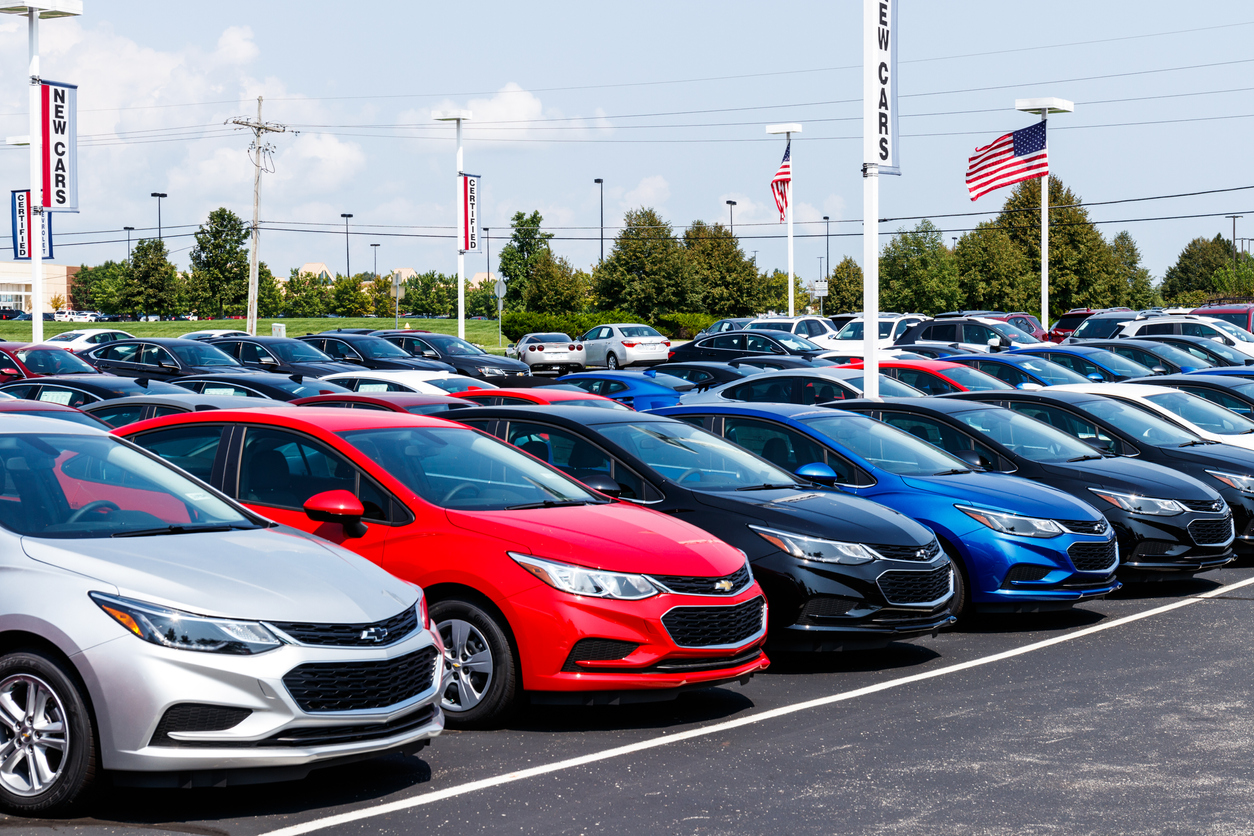Used Trucks 2500 For Sale: Your Ultimate Guide to Finding the Perfect Heavy-Duty Workhorse pickup.truckstrend.com
In the world of trucks, the "2500" designation holds a special significance. It represents a class of heavy-duty vehicles, often referred to as 3/4-ton trucks, designed for tasks that push beyond the capabilities of their lighter 1500 (half-ton) counterparts. For individuals and businesses requiring substantial towing, serious hauling capacity, and robust durability without the significant financial outlay of a brand-new model, exploring "Used Trucks 2500 For Sale" is not just a smart choice—it’s often the most economical and practical one.
This comprehensive guide will navigate you through the landscape of used 2500 trucks, illuminating the benefits, key considerations, popular models, and essential tips to ensure you make an informed and successful purchase. Whether you’re a contractor needing to haul equipment, a rancher towing livestock, a boater pulling a large cruiser, or simply someone who appreciates the power and versatility, a used 2500 truck offers a compelling value proposition.
Used Trucks 2500 For Sale: Your Ultimate Guide to Finding the Perfect Heavy-Duty Workhorse
Why Choose a Used 2500 Truck? The Value Proposition
Opting for a used 2500 truck over a new one offers several compelling advantages that extend beyond just the initial sticker price:
- Significant Cost Savings: New trucks, especially heavy-duty models, depreciate rapidly in their first few years. Buying used allows you to bypass this steepest depreciation curve, getting more truck for your money.
- Slower Depreciation: Once a truck is a few years old, its depreciation rate slows considerably. This means your investment holds its value better over time compared to a new purchase.
- Proven Reliability: Many 2500 series trucks are built to last, with engines and drivetrains designed for demanding work. A well-maintained used truck can offer years of reliable service. Vehicle history reports (like CarFax or AutoCheck) can provide insights into past maintenance.
- Wider Selection and Features: The used market offers a vast array of makes, models, trim levels, and engine configurations from various years. This allows you to find a truck with the specific features, power, and styling you desire, which might be out of budget for a new vehicle.
- Established Performance Data: For older models, there’s a wealth of real-world performance data and owner reviews available, helping you identify reliable years or common issues to watch out for.

Key Manufacturers and Popular Models
The market for 2500 series trucks is dominated by a few major players, each with a loyal following and distinct characteristics. Understanding these can help narrow your search:

- Ford F-250 Super Duty: A perennial bestseller, known for its robust build and powerful engine options, particularly the legendary Power Stroke diesel. Ford Super Duty trucks are workhorses favored by contractors and those with serious towing needs.
- Ram 2500: Renowned for its comfortable ride (especially models with coil-spring rear suspension or air suspension options) and the highly regarded Cummins Turbo Diesel engine, which offers immense torque and durability. Ram trucks often blend capability with a more refined interior.
- Chevrolet Silverado 2500HD: Part of GM’s heavy-duty lineup, the Silverado 2500HD (and its twin, the GMC Sierra 2500HD) offers a balanced blend of power, comfort, and advanced towing technologies. The Duramax diesel engine paired with the Allison transmission is a highly respected powertrain.
- GMC Sierra 2500HD: Essentially the upscale sibling of the Silverado, the Sierra 2500HD shares the same powerful engines and chassis but often features more premium styling and interior appointments.

When considering these models, pay attention to the specific engine (gas or diesel), transmission, and axle ratios, as these significantly impact the truck’s performance and fuel economy for your intended use.
What to Look For When Buying a Used 2500 Truck
Purchasing a used heavy-duty truck requires a meticulous approach. Here’s a checklist of what to inspect:
- Vehicle History Report (VHR): Always start with a CarFax or AutoCheck report. This will reveal critical information like accident history, reported odometer readings, service records, title issues (salvage, flood, etc.), and previous ownership.
- Exterior and Frame Inspection:
- Rust: Check wheel wells, rocker panels, cab corners, and especially the frame. Rust on the frame can compromise structural integrity.
- Body Damage: Look for signs of accidents (misaligned panels, inconsistent paint, bondo).
- Tires: Ensure even wear, adequate tread depth, and that they are a matching set. Uneven wear can indicate alignment or suspension issues.
- Under the Hood:
- Fluid Leaks: Check for oil, coolant, transmission fluid, or power steering fluid leaks.
- Belts and Hoses: Look for cracks, fraying, or excessive wear.
- Battery: Check for corrosion on terminals.
- Engine Sounds: Listen for knocking, ticking, or unusual noises during startup and operation. Pay close attention to diesel injectors or turbocharger sounds.
- Interior Inspection:
- Wear and Tear: Assess the condition of seats, dashboard, and carpets. Excessive wear might indicate very high mileage or heavy use.
- Electronics: Test all lights, windows, locks, radio, HVAC system, and any infotainment features.
- Odors: Musty smells can indicate water leaks; a sweet smell could be coolant.
- Test Drive:
- Engine Performance: Accelerate smoothly and aggressively. Listen for power loss, hesitation, or unusual sounds.
- Transmission: Check for smooth shifts, no slipping or harsh jerking. Test all gears, including reverse.
- Brakes: Test at various speeds. Look for pulsation, pulling, or excessive noise.
- Steering and Suspension: Does it pull to one side? Are there clunks or squeaks over bumps? Does the steering feel loose?
- 4×4 System (if applicable): Engage 4-wheel drive and ensure it shifts smoothly and operates correctly.
- Professional Pre-Purchase Inspection (PPI): This is perhaps the most crucial step. Hire an independent, certified mechanic (preferably one familiar with heavy-duty trucks) to thoroughly inspect the vehicle. They can identify issues that are not apparent to the untrained eye, potentially saving you thousands in future repairs.
Understanding Engine Options: Gas vs. Diesel
The choice between a gas and diesel engine is one of the most significant decisions when buying a 2500 truck, directly impacting performance, cost, and maintenance.
-
Diesel Engines (e.g., Ford Power Stroke, Ram Cummins, GM Duramax):
- Pros: Superior towing and hauling capacity due to immense torque, better fuel economy when under load, exceptional longevity (often lasting 300,000+ miles with proper maintenance), strong resale value.
- Cons: Higher initial purchase price, more expensive and specialized maintenance, higher fuel costs (though better MPG can offset this), slower warm-up times, potential for complex emissions systems issues in newer models.
- Ideal For: Frequent heavy towing (RVs, large trailers, equipment), long-haul driving, commercial applications.
-
Gas Engines (e.g., Ford Godzilla V8, Ram HEMI, GM Vortec/Duramax Gas V8):
- Pros: Lower initial purchase price, simpler and generally less expensive maintenance, quicker warm-up times, readily available fuel.
- Cons: Lower towing and payload capacities compared to diesel, significantly worse fuel economy, especially when towing or hauling, less torque.
- Ideal For: Lighter towing, occasional heavy hauling, daily driving, or situations where the maximum towing capacity of a diesel isn’t required.
Your specific needs and intended use should dictate your engine choice.
Important Considerations: Payload, Towing, and Drivetrain
Beyond the engine, understanding these specifications is vital for matching the truck to your work:
- Payload Capacity: This is the maximum weight a truck can safely carry, including passengers, cargo in the bed, and tongue weight from a trailer. Don’t confuse this with towing capacity.
- Towing Capacity:
- Conventional Towing: Using a bumper hitch or receiver hitch.
- Gooseneck/Fifth Wheel Towing: For larger trailers, requiring a hitch mounted in the truck bed. 2500 series trucks excel here.
- Always check the truck’s Gross Vehicle Weight Rating (GVWR), Gross Combined Weight Rating (GCWR), and Gross Axle Weight Ratings (GAWR) to ensure you stay within legal and safe limits.
- Drivetrain: 2WD vs. 4WD:
- 2WD (Two-Wheel Drive): Typically lighter, slightly better fuel economy, lower cost. Sufficient for paved roads and light-duty work where traction isn’t a major concern.
- 4WD (Four-Wheel Drive): Essential for off-road driving, slippery conditions (snow, mud, sand), or navigating construction sites. It adds weight, complexity, and usually comes at a higher cost.
Tips for a Smooth Purchase
- Set a Realistic Budget: Factor in the purchase price, potential repairs, insurance, registration, and ongoing maintenance.
- Research Thoroughly: Use online classifieds, dealership websites, and forums. Compare prices for similar models in your area.
- Don’t Rush: The perfect truck might not appear immediately. Be patient and wait for the right deal.
- Negotiate: Always be prepared to negotiate the price. Know the market value of the truck you’re interested in.
- Consider Financing: If you’re not paying cash, secure pre-approval for a loan. Interest rates for used vehicles can vary, especially for older models.
- Private Seller vs. Dealership:
- Private Seller: Often lower prices, more direct negotiation. Less recourse if issues arise.
- Dealership: Higher prices, but often offer warranties, financing options, and a more streamlined process.
Potential Challenges and Solutions
- Finding a Well-Maintained Truck:
- Challenge: Many used 2500 trucks have been used for hard work, leading to wear and tear.
- Solution: Prioritize trucks with complete service records, perform a thorough PPI, and be wary of "too good to be true" deals. Expand your search radius if necessary.
- High Mileage:
- Challenge: A truck with 150,000+ miles might seem daunting.
- Solution: For diesel trucks, high mileage isn’t necessarily a deal-breaker if maintenance has been diligent. Gas engines might show more wear. Focus on maintenance history and a PPI over just the odometer reading.
- Hidden Issues:
- Challenge: Undisclosed mechanical problems or previous accident damage.
- Solution: A comprehensive VHR and, most importantly, a professional PPI are your best defenses.
- Financing Older Models:
- Challenge: Banks may be hesitant to finance very old or high-mileage trucks, or may offer higher interest rates.
- Solution: Shop around for lenders, consider credit unions, or be prepared for a larger down payment.
Used Trucks 2500 For Sale: Sample Price Guide
Please note: Prices are highly variable based on location, exact mileage, condition, trim level, 2WD/4WD, specific engine, and market demand. This table provides estimated ranges for common configurations.
| Make/Model | Year Range | Engine Type | Mileage Range (mi) | Condition (Typical) | Estimated Price Range (USD) | Key Features/Notes |
|---|---|---|---|---|---|---|
| Ford F-250 Super Duty | 2010-2015 | 6.2L Gas / 6.7L Diesel | 120,000 – 200,000+ | Fair to Good | $15,000 – $30,000 | Reliable workhorse, older diesels can have emissions issues |
| 2016-2020 | 6.2L Gas / 6.7L Diesel | 60,000 – 150,000 | Good to Excellent | $30,000 – $55,000+ | Improved tech, more refined interiors, strong Power Stroke | |
| Ram 2500 | 2010-2015 | 5.7L Gas / 6.7L Cummins | 120,000 – 200,000+ | Fair to Good | $14,000 – $28,000 | Legendary Cummins, some early 4th-gen models |
| 2016-2020 | 5.7L Gas / 6.4L Gas / 6.7L Cummins | 60,000 – 150,000 | Good to Excellent | $28,000 – $52,000+ | Coil-spring rear suspension (smoother ride), powerful options | |
| Chevy Silverado 2500HD | 2010-2015 | 6.0L Gas / 6.6L Duramax | 130,000 – 200,000+ | Fair to Good | $13,000 – $27,000 | Robust powertrain, straightforward design |
| 2016-2020 | 6.0L Gas / 6.6L Duramax | 60,000 – 150,000 | Good to Excellent | $27,000 – $50,000+ | Refined ride, integrated trailering tech, Duramax/Allison | |
| GMC Sierra 2500HD | 2010-2015 | 6.0L Gas / 6.6L Duramax | 130,000 – 200,000+ | Fair to Good | $14,000 – $28,000 | Similar to Silverado, often more upscale |
| 2016-2020 | 6.0L Gas / 6.6L Duramax | 60,000 – 150,000 | Good to Excellent | $28,000 – $53,000+ | Premium features, more distinctive styling |
Frequently Asked Questions (FAQ)
Q1: What does "2500" mean in a truck’s name?
A1: "2500" refers to a 3/4-ton truck, indicating a heavier-duty class than the more common 1500 (half-ton) trucks. It means higher payload and towing capacities, and generally more robust components.
Q2: Is a diesel or gas engine better for towing in a 2500 truck?
A2: For serious and frequent towing, especially heavy loads, a diesel engine is generally superior due to its higher torque, better fuel economy under load, and greater longevity. Gas engines are suitable for lighter or occasional towing and have lower initial costs.
Q3: How much can a 2500 truck typically tow?
A3: Towing capacities vary widely by year, engine, drivetrain, and axle ratio, but a 2500 truck can typically tow anywhere from 12,000 lbs (gas engine, conventional hitch) up to 20,000 lbs or more (diesel engine, 5th wheel/gooseneck hitch). Always check the specific truck’s capabilities.
Q4: What mileage is too high for a used 2500?
A4: There’s no single "too high" mileage. For diesel 2500 trucks, 200,000-300,000 miles can be acceptable if the truck has been meticulously maintained. Gas engines might show more wear at these mileages. Focus on maintenance records and a professional inspection rather than just the odometer reading.
Q5: Should I buy from a dealership or a private seller?
A5: Dealerships often offer more convenience, financing options, and sometimes limited warranties, but usually at a higher price. Private sellers can offer lower prices and more room for negotiation, but typically come with no warranty and require more due diligence from the buyer.
Q6: What is a pre-purchase inspection (PPI)?
A6: A PPI is a comprehensive inspection of a used vehicle by an independent, certified mechanic before you finalize the purchase. It’s highly recommended for 2500 trucks to uncover hidden mechanical issues, safety concerns, or signs of previous damage.
Q7: How important is a vehicle history report (VHR)?
A7: Extremely important. A VHR (like CarFax or AutoCheck) provides a snapshot of the truck’s past, including accident history, reported maintenance, odometer readings, previous ownership, and title issues (salvage, flood, etc.). It’s a crucial tool for avoiding problematic vehicles.
Conclusion
The market for "Used Trucks 2500 For Sale" presents an incredible opportunity to acquire a powerful, capable, and reliable heavy-duty vehicle without the premium price tag of a new model. By understanding the nuances of these formidable machines—from engine choices and towing capacities to diligent inspection protocols and market values—you empower yourself to make a smart, informed decision. A well-chosen used 2500 truck isn’t just a vehicle; it’s a valuable asset that will reliably serve your toughest demands for years to come, proving that sometimes, the best value is found in a road-tested workhorse.